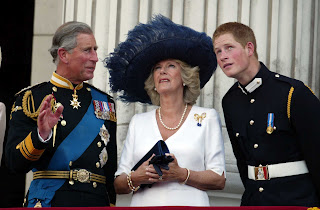Henri Cartier-Bresson
During this course, I learned about many different journalistic photographers. Among them, Henri Cartier-Bresson's style of photography is my best like because he believes in taking pictures while being invisible, not interrupting the scene, so his photographic style was unique, subject forward, and being invisible. I like with this way of working. Henri Cartier-Bresson (1908 - 2004) was born in 1908, in Chanteloupe, France. He was one of the greatest French photographers in 20th century, considered to be the father of modern photojournalism. He was an early adopter of 35 mm format, and the master of candid photography. He helped develop the "street photography" or "real life reportage" style that has influenced generations of photographers who followed. His photos contained the richness, the sensibilities, and the varieties of the human experience and he also elevated "snap shooting" to the level of a refined and disciplined art. The most important thing in Henri's photographs is that the photographers should with the astonishing patience and the power of observation. He was able to find the art in life, instead of making it. Many people said his work proved that photography is capable of faithfully reproducing reality; all you have to do is catch the right moment to show the people and surrounding world in all their happiness and unhappiness. While looking at his photographs it makes me feel like I am in that period of time.
The photos on the below I picked all have reflected his “real life reportage” or "street photography" style. Also, all photographers said they are inspired and learned how to take the decisive moment. The decisive moment means "le moment decisive", the right moment which the elements in motion come together and are in complete balance.
'His people seem lost or marooned on the city streets' ... Henri Cartier-Bresson's Harlem (1947). Photograph: Magnum Photos
http://www.guardian.co.uk/artanddesign/2009/jul/20/photographing-america-evans-cartier-bresson
http://www.guardian.co.uk/artanddesign/2009/jul/20/photographing-america-evans-cartier-bresson
This photo was taken by Manolo Almeida. He said "...Bresson´s images show me how to see the simple people of one particular way."
[Bouchard]
http://jpgmag.com/blog/2010/05/best-of-photo-challenge-inspired-by-henri-cartier-bresson.html
When I found the Henri's photographs, I really like this photo because of the feel. The subject in this photo was so natural; we can see that the people who lived in their daily life. Even though many people think it is easy to shooting this kind of photos, I think that to capture of the natural photographs like joyful or sad, photographers should have an astonishing patience to waiting for the moment to occur so it is too difficult to shooting these types of photos. Both of them present the relationship with the people’s natural daily life.
http://users.ipfw.edu/virtue/intl/Photo%20Contest/Photo%20Contest%20Winners%2007/39.e.%20Leanna%20on%20the%20Louvre%20fountain%20black%20and%20white.jpg
The photo on the right shows a couple that is lying near the beach and enjoying the day and the sun shine. We can imagine from the picture that they may either be talking to each other or just enjoying the sun shine, sleeping behind it. The picture on the left that I searched on the website showed a woman lying on the edge of a well. I think this photograph reminds me of Henri’s work since people weren’t alerted and the photographer captured the moment or events of this currently place. It is clear that both images have such a quiet atmosphere.
Andre Kertesz, Montmartre, 1927
PRAGUE, Czechoslovakia—1992. © Josef Koudelka / Magnum Photos
http://blog.ricecracker.net/tag/henri-cartier-bresson/page/2/
Photographer: Henri Cartier-Bresson
http://erickimphotography.com/blog/2011/08/10-things-henri-cartier-bresson-can-teach-you-about-street-photography/
We can see that in third photo, Henri combined all the geometry at the composition such as the vertical, horizontal, and diagonal lines, curves, and others to his photo. In the similar picture, there was the old man walking with a stick and used the shapes and geometry as well. The three images have the same subjects-people and staircase. Therefore, I think the photograph reminds me of Henri’s work.
Untitled by Nema' Etebar
"Henri Cartier-Bresson: a truly great photographer. He had a way of capturing timeless moments. I respect his perspective a great deal."
This is one of my favorite’s photos by Henri is of the old man is sitting on a couch. The seniors are great subjects to shoot because they always show out the best face of natural. When I see the picture first time, I feel how beautiful these pictures are. The similar picture on the left was capturing the pretty old lady. Both of them present timeless moments and I like the way of his work.
Three of a Kind by Wyn Lovoto
"HCB inspired me in taking this picture as I waited patiently and low-profile until the right moment arose: lighting, poses, expressions, composition all came together during a very short moment of time.
"HCB inspired me in taking this picture as I waited patiently and low-profile until the right moment arose: lighting, poses, expressions, composition all came together during a very short moment of time.






























